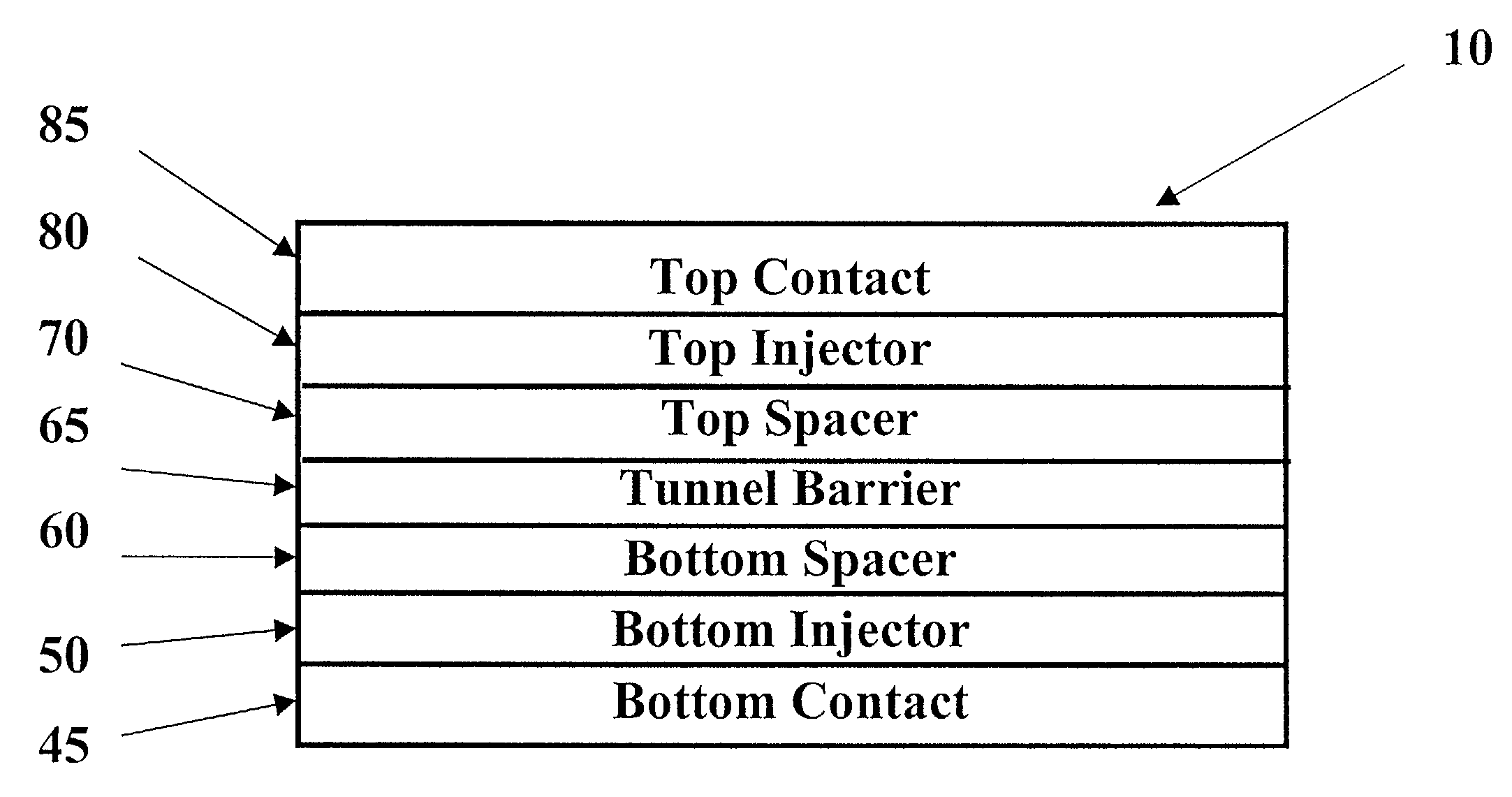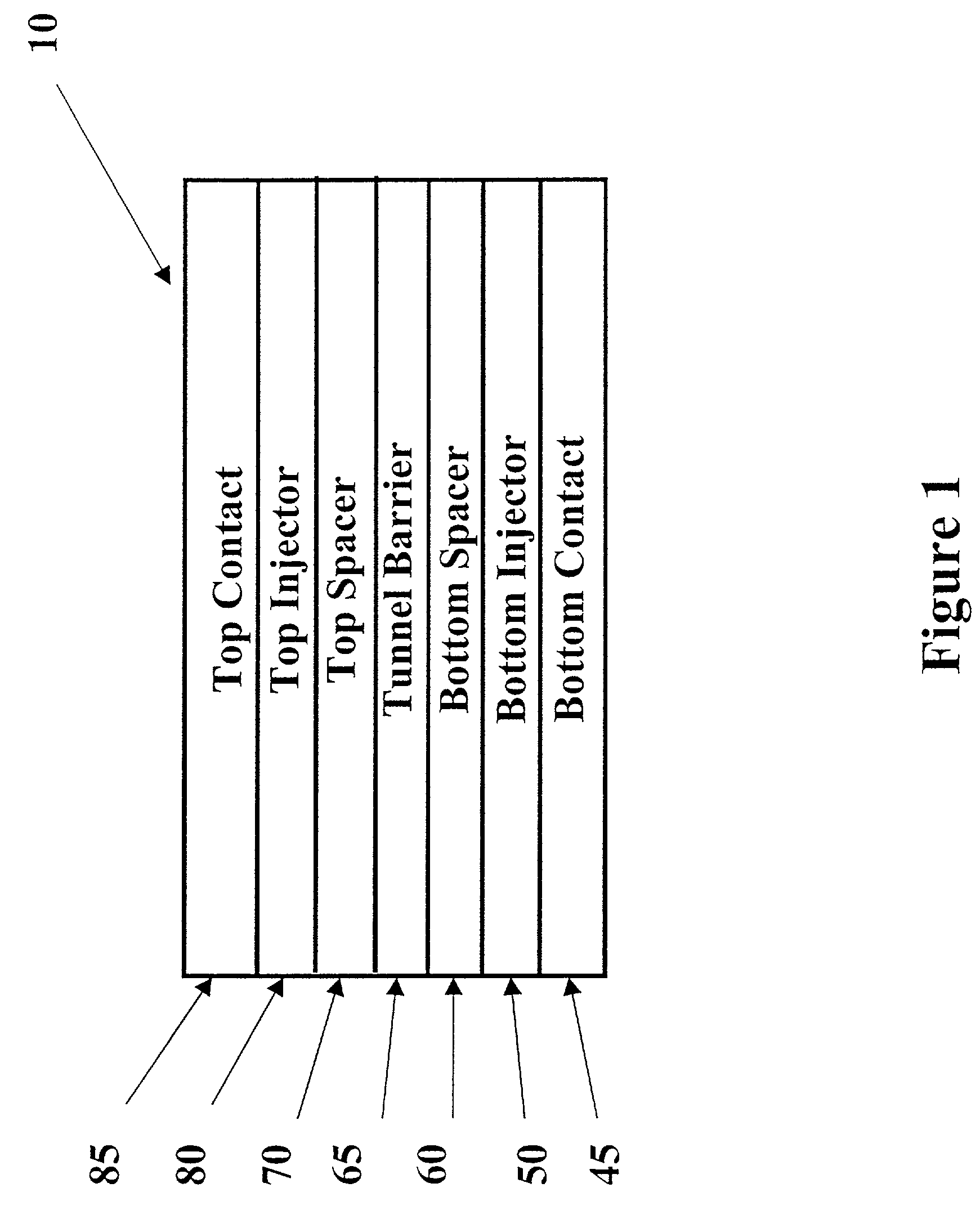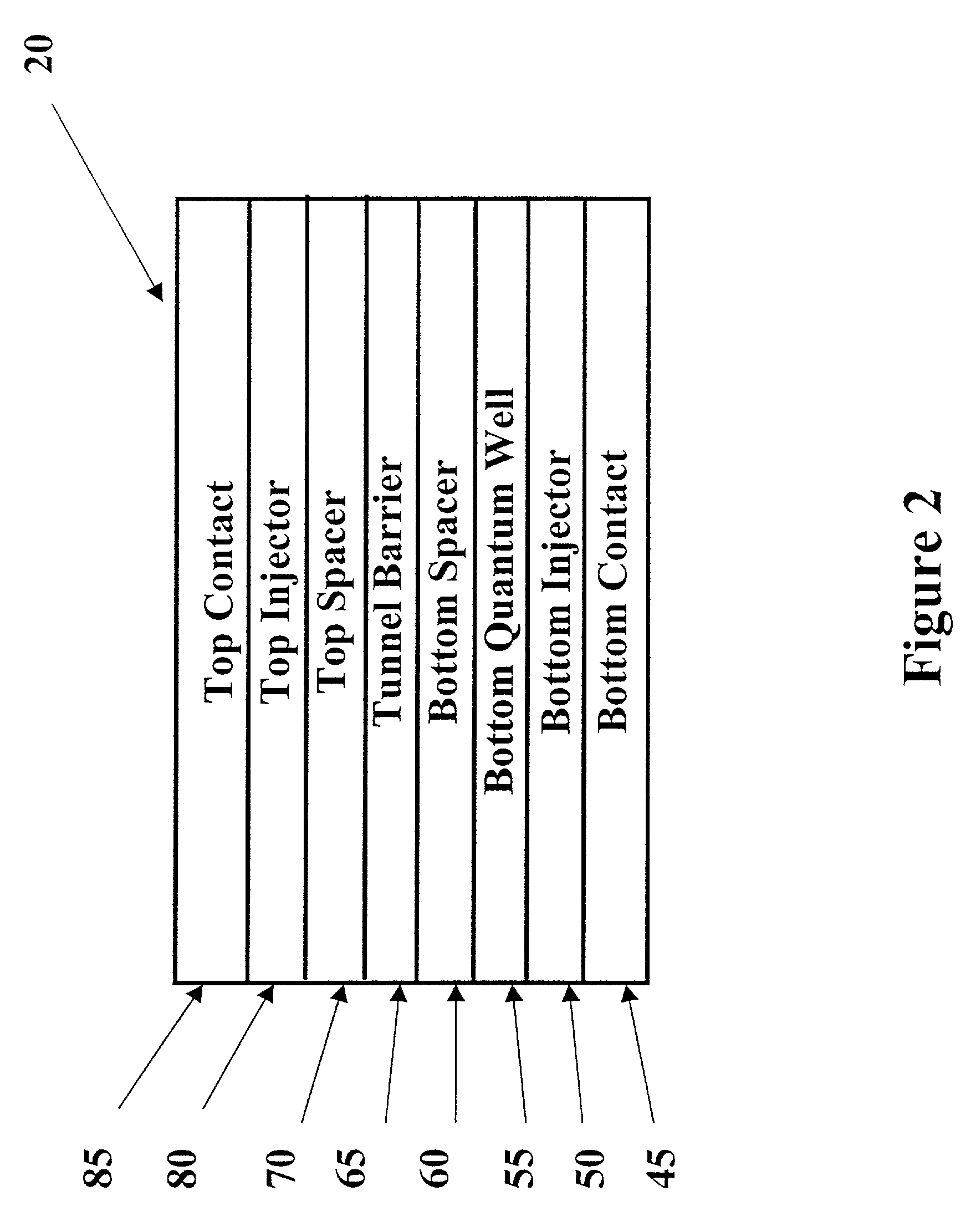Method of making interband tunneling diodes
a tunneling diode and interband technology, applied in the direction of diodes, semiconductor devices, electrical apparatus, etc., can solve the problems of undesirable broadening of the -doping plane, kinetic growth of the -doping layer, and the inability to build n-type rtd in si
- Summary
- Abstract
- Description
- Claims
- Application Information
AI Technical Summary
Benefits of technology
Problems solved by technology
Method used
Image
Examples
example 1
[0083]This example illustrates an embodiment of a SiGe Heterojunction Esaki which takes advantage of the natural band offsets between Si and Si0 5Ge0.5 to lower the doping requirements on the P+ side of the junction. This structure is shown in FIG. 4 with an accompanying electrostatic band diagram. A 10 nm digitally graded superlattice (DG-SL) was incorporated on the P+ side of the junction to reduce the barrier for holes to populate the valence band well. Similar structures incorporated as part of InP based MSM photodetectors have been used to enhance the bandwidth, and this was a secondary motivation here [58]. In order to lower the current density for potential low power memory applications, a 4 nm intrinsic Si spacer was placed between the P++ and N++ layers. FIG. 5 demonstrates the I-V characteristics of this structure. NDR was observed for a 600° C., 1 min. anneal. The PVCR was found to be 1.2 at a low current density of 7.5 A / cm2.
example 2
[0084]Schematic diagrams of the RITDs examined in this embodiment are shown in FIG. 6. FIG. 6(a) shows one configuration of the RITD, TD1, which employed a 4 nm undoped Si0.5Ge0.5 tunneling barrier and δ-doping planes at the Si / SiGe heterointerface. FIG. 6(b) shows another configuration, TD2, which was identical to TD1 described above, except that both δ-doping planes were offset from the Si / SiGe heterointerface with 1 nm of undoped Si on either side of the Si0.5Ge0.5 tunneling barrier. Portions of each wafer were annealed in an AG Associates Heat Pulse 610 RTA at 600° C., 700° C., or 800° C. All anneal times were fixed at 1 minute.
[0085]As-grown samples show very weak inflections near the origin when unannealed. The diode performance was improved at 600° C. 1 min annealing conditions, showing a slight inflection in the I-V near 0.4 V. No NDR was evident in this layer either. For both structures, samples were annealed at 700° C. and 800° C., 1 min. The results for these two samples ...
example 3
[0087]In order to address the influence of the offset in δ-doping from the heterointerface, additional layers may be fabricated. These layers, referred to as TD4 and TD5, are shown schematically in FIGS. 10 and 11, respectively. The distance between the δ-doping planes, including both the Si and SiGe layers, was fixed at 4 nm in both layers to allow a direct comparison with TD1 and TD3. The Si0.5Ge0.5 layer in TD3 was 3 nm thick, and in TD4 was 1 nm thick. Based on the previous studies, it was determined that an advantageous anneal for this structure was 700° C., 1 min. Therefore, as a comparison, both of these samples were annealed under this condition, and also at 600° C., 1 min.
[0088]The portions of both sample annealed at 600° C., 1 min only showed weak inflections in the forward directions. Consistent with the other samples investigated, NDR was observed for a 700° C., 1 min anneal. Dramatically different performance was observed between the two samples. The current density obs...
PUM
 Login to view more
Login to view more Abstract
Description
Claims
Application Information
 Login to view more
Login to view more - R&D Engineer
- R&D Manager
- IP Professional
- Industry Leading Data Capabilities
- Powerful AI technology
- Patent DNA Extraction
Browse by: Latest US Patents, China's latest patents, Technical Efficacy Thesaurus, Application Domain, Technology Topic.
© 2024 PatSnap. All rights reserved.Legal|Privacy policy|Modern Slavery Act Transparency Statement|Sitemap



